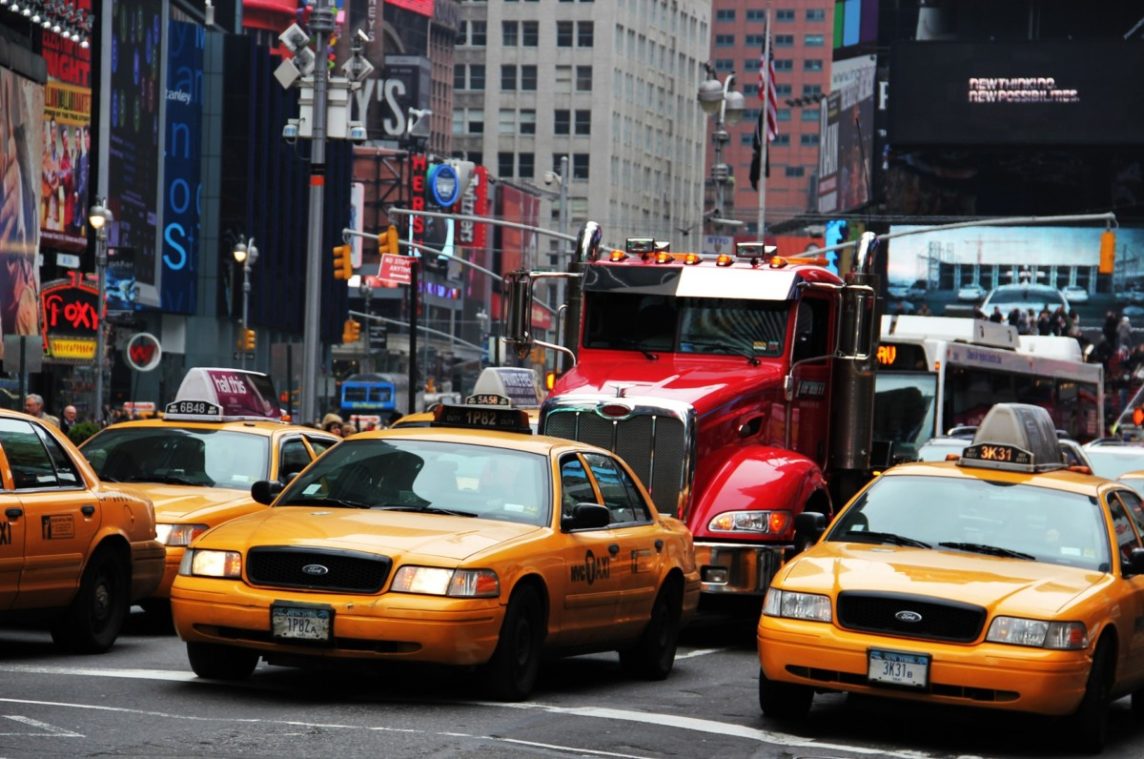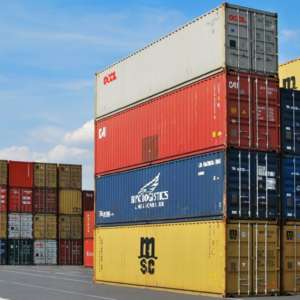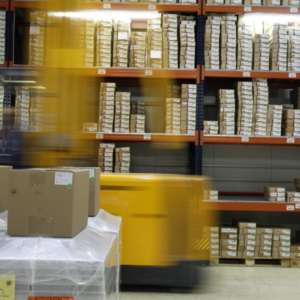Moving freight through the world’s biggest cities is about to become even more expensive. Beginning in 2021, New York will be the first American city to implement “congestion pricing,” and will charge a toll to vehicles entering Manhattan south of Central Park.
New York City’s congestion pricing plan is a response to ever-worsening traffic issues in major metropolises. According to New York traffic engineer (and congestion pricing evangelist) Sam Schwartz, traffic speeds in Manhattan dropped from 6.5 mph to 4.7 mph between 2012 and 2017. A 2017 report by McKinsey and Bloomberg found that traffic congestion costs “as much as 2 to 4 percent of city GDP, in the form of lost time, wasted fuel, and higher costs of doing business.”
There are multiple reasons why city streets are increasingly clogged. One is that cities are simply becoming more populous; according to the UN, 55 percent of the world’s population now lives in urban areas, and that’s set to rise to 68 percent by 2050. Another culprit (unsurprisingly) is the rise of ecommerce, which has crowded streets with delivery trucks. The USPS alone has seen a staggering surge in package delivery in the past decade: from 3.1 billion packages in 2010 to 5.1 billion packages in 2016 (a number which has presumably spiked even higher with the advent of same-day deliveries from Amazon and other online retailers).
Rideshare companies such as Uber and Lyft may also be contributing to the problem, by shifting passengers from public transit, and adding hundreds of miles in the form of drivers en route to pick up customers (Uber and Lyft disagree with this assertion). It’s ironic, given that both ecommerce and ridesharing were originally predicted to reduce traffic, but data from Seattle suggests that non-work vehicle trips are actually increasing.
The fundamental issue behind urban gridlock is that most cities were designed before the advent of cars and are particularly ill-prepared to handle a constant stream of deliveries to residential buildings. Residences lack loading docks and dedicated truck parking, so delivery vans are forced to idle outside, blocking street traffic. Traditional parking tickets do little to discourage this behavior, since parcel delivery companies negotiate deals to pay them of en-masse, in exchange for forfeiting the right to contest individual tickets.
Unlike wholesale deliveries to retailers, which can be scheduled for maximum efficiency, the average ecommerce consumer doesn’t care if they receive three packages, three days in a row, instead of one bulk delivery. And in the age of Amazon, online retailers are highly incentivized to facilitate this consumer behavior, with free, fast delivery that masks the giant logistical machinery behind it.
Congestion pricing is a reasonable reaction to this state of affairs, in which traffic slows down a city’s pace of business, not to mention increases air and noise pollution and the risk of accidents. In international cities that have implemented the concept, it has been very effective, reducing Singapore’s traffic by 44 percent and cutting traffic delays in London by a quarter, according to Politico. If New York’s experiment is successful in reducing traffic and raising funds for the beleaguered subway system, other American cities are likely to follow suit.
The downside of congestion pricing, however, is that it unfairly punishes traditional trucking companies (not to mention low-income car owners) for a problem they didn’t create. While the exact amount of Manhattan’s toll hasn’t been determined yet, early estimates put it at about $25 per truck, in an area that already demands stiff tolls for crossing the George Washington bridge or driving on the New Jersey Turnpike. Truckers would have to pass on these costs to shippers, which has the potential to further damage the retail landscape, especially for independently owned stores who can ill-afford to operate on slimmer margins.
There are other solutions to the urban traffic problem that offer more workarounds for truckers and place a greater onus on ecommerce delivery structures. One simple tactic, already gaining popularity, is installing delivery lockers on the ground floors of apartment buildings, to cut down on the time drivers spend going from door to door. Another tech-lite option is for cities to incentivize night deliveries, when traffic is less dense. Futuristically, drone delivery will likely have a role to play, although McKinsey’s report emphasizes that drones are mostly suited to sprawling cities where they have room to land. Hopefully, cities will explore a healthy mix of policies to decrease traffic, rather than leaning solely on congestion pricing. It might even be worth acknowledging that in a world where people increasingly live in cities, and expect their goods, meals, and rides delivered at the touch of a button, those expectations may need to be moderated.
Red Arrow Logistics has the scale and scope to meet the budget and schedule requirements of the largest and smallest companies alike. If we can be of assistance, please email me at liz.lasater@redarrowlogistics.com or give us a call 425-747-7914



